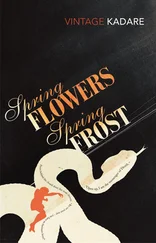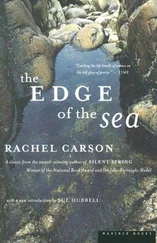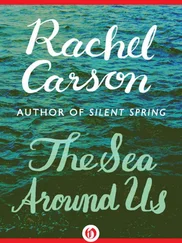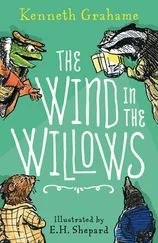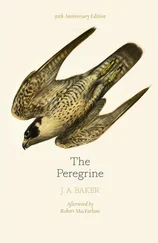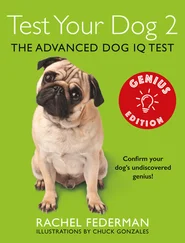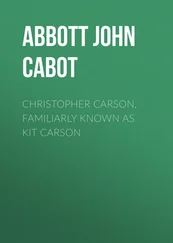The “control of nature” is a phrase conceived in arrogance, born of the Neanderthal age of biology and philosophy, when it was supposed that nature exists for the convenience of man. The concepts and practices of applied entomology for the most part date from that Stone Age of science. It is our alarming misfortune that so primitive a science has armed itself with the most modern and terrible weapons, and that in turning them against the insects it has also turned them against the earth.
List of Principal Sources
CHAPTER 2: THE OBLIGATION TO ENDURE
“Report on Environmental Health Problems,” Hearings, 86th Congress, Subcom. of Com. on Appropriations, March 1960, p. 170.
The Pesticide Situation for 1957–58, U.S. Dept of Agric., Commodity Stabilization Service, April 1958, p. 10.
Elton, Charles S., The Ecology of Invasions by Animals and Plants. New York: Wiley, 1958.
Shepard, Paul, “The Place of Nature in Man’s World,” Atlantic Naturalist, Vol. 13 (April–June 1958), pp. 85–89.
CHAPTER 3: ELIXIRS OF DEATH
Gleason, Marion, et al., Clinical Toxicology of Commercial Products. Baltimore: Williams and Wilkins, 1957.
Gleason, Marion, et al., Bulletin of Supplementary Material: Clinical Toxicology of Commercial Products, Vol. IV, No. 9. Univ. of Rochester.
The Pesticide Situation for 1958–59, U.S. Dept. of Agric., Commodity Stabilization Service, April 1959, pp. 1–24.
The Pesticide Situation for 1960–61, U.S. Dept. of Agric., Commodity Stabilization Service, July 1961, pp. 1–23.
Hueper, W. C., Occupational Tumors and Allied Diseases. Springfield, 111.: Thomas, 1942.
Todd, Frank E., and S. E. McGregor, “Insecticides and Bees,” Yearbook of Agric., U.S. Dept. of Agric., 1952, pp. 131–35.
Hueper, Occupational Tumors.
Bowen, C. V., and S. A. Hall, “The Organic Insecticides,” Yearbook of Agric., U.S. Dept. of Agric., 1952, pp. 209–18.
Von Oettingen, W. F., The Halogenated Aliphatic, Olefinic, Cyclic, Aromatic, and Aliphatic-Aromatic Hydrocarbons: Including the Halogenated Insecticides, Their Toxicity and Potential Dangers. U.S. Dept. of Health, Education, and Welfare. Public Health Service Publ. No. 414 (1955), pp. 341–42.
Laug, Edwin P., et al., “Occurrence of DDT in Human Fat and Milk,” A.M.A. Archives Indus. Hygiene and Occupat. Med., Vol. 3 (1951), pp. 245–46.
Biskind, Morton S., “Public Health Aspects of the New Insecticides,” Am. Jour. Diges. Diseases, Vol. 20 (1953), No. 11, pp. 331–41.
Laug, Edwin P., et al., “Liver Cell Alteration and DDT Storage in the Fat of the Rat Induced by Dietary Levels of 1 to 50 p.p.m. DDT,” Jour. Pharmacol, and Exper. Therapeut., Vol. 98 (1950), p. 268.
Ortega, Paul, et al., “Pathologic Changes in the Liver of Rats after Feeding Low Levels of Various Insecticides,” A.M.A. Archives Path., Vol. 64 (Dec. 1957), pp. 614–22.
Fitzhugh, O. Garth, and A. A. Nelson, “The Chronic Oral Toxicity of DDT (2,2-BIS p-CHLOROPHENYL-1,1,1 -TRI-CHLOROETHANE),” Jour. Pharmacol, and. Exper. Therapeut., Vol. 89 (1947). No. 1, pp. 18–30.
Laug et al., “Occurrence of DDT in Human Fat and Milk.”
Hayes, Wayland J., Jr., et al., “Storage of DDT and DDE in People with Different Degrees of Exposure to DDT,” A.M.A. Archives Indus. Health, Vol. 18 (Nov. 1958), pp. 398–406.
Durham, William F., et al., “Insecticide Content of Diet and Body Fat of Alaskan Natives,” Science, Vol. 134 (1961), No. 3493, pp. 1880–81.
Von Oettingen, Halogenated… Hydrocarbons, p. 363.
Smith, Ray F., et al., “Secretion of DDT in Milk of Dairy Cows Fed Low Residue Alfalfa,” Jour. Econ. Entomol., Vol. 41 (1948), pp. 759–63.
Laug et al., “Occurrence of DDT in Human Fat and Milk.”
Finnegan, J. K., et al., “Tissue Distribution and Elimination of DDD and DDT Following Oral Administration to Dogs and Rats,” Proc. Soc. Exper. Biol, and Med., Vol. 72 (1949), 356–57.
Laug et al., “Liver Cell Alteration.”
“Chemicals in Food Products,” Hearings, H.R. 74, House Select Com. to Investigate Use of Chemicals in Food Products, Pt. 1 (1951), p. 275.
Von Oettingen, Halogenated … Hydrocarbons, p. 322.
“Chemicals in Food Products,” Hearings, 81st Congress, H.R. 323, Com. to Investigate Use of Chemicals in Food Products, Pt. 1 (1950), pp. 388–90.
Clinical Memoranda on Economic Poisons. U.S. Public Health Service Publ. No. 476 (1956), p. 28.
Gannon, Norman, and J. H. Bigger, “The Conversion of Aldrin and Heptachlor to Their Epoxides in Soil,” Jour. Econ. Entomol., Vol. 51 (Feb. 1958), pp. 1–2.
Davidow, B., and J. L. Radomski, “Isolation of an Epoxide Metabolite from Fat Tissues of Dogs Fed Heptachlor,” Jour. Pharmacol, and Exper. Therapeut., Vol. 107 (March 1953), pp. 259–65.
Von Oettingen, Halogenated … Hydrocarbons , p. 310.
Drinker, Cecil K., et al., “The Problem of Possible Systemic Effects from Certain Chlorinated Hydrocarbons,” Jour. Indus. Hygiene and Toxicol., Vol. 19 (Sept. 1937), p. 283.
“Occupational Dieldrin Poisoning,” Com. on Toxicology, Jour. Am. Med. Assn., Vol. 172 (April 1960), pp. 2077–80.
Scott, Thomas G., et al., “Some Effects of a Field Application of Dieldrin on Wildlife,” Jour. Wildlife Management, Vol. 23 (Oct. 1959), pp. 409–27.
Paul, A. H., “Dieldrin Poisoning—a Case Report,” New Zealand Med. Jour., Vol. 58 (1959), p. 393.
Hayes, Wayland J., Jr., “The Toxicity of Dieldrin to Man,” Bull. World Health Organ., Vol. 20 (1959), pp. 891–912.
Gannon, Norman, and G. C. Decker, “The Conversion of Aldrin to Dieldrin on Plants,” Jour. Econ. Entomol., Vol. 51 (Feb. 1958), pp. 8–11.
Kitselman, C. H., et al., “Toxicological Studies of Aldrin (Compound 118) on Large Animals,” Am. Jour. Vet. Research, Vol. 11 (1950), p. 378.
Dahlen, James H., and A. O. Haugen, “Effect of Insecticides on Quail and Doves,” Alabama Conservation, Vol. 26 (1954), No. 1, pp. 21–23.
DeWitt, James B., “Chronic Toxicity to Quail and Pheasants of Some Chlorinated Insecticides,” Jour. Agric. and Food Chem., Vol. 4 (1956), No. 10, pp. 863–66.
Kitselman, C. H., “Long Term Studies on Dogs Fed Aldrin and Dieldrin in Sublethal Doses, with Reference to the Histopathological Findings and Reproduction,” Jour. Am. Vet. Med. Assn., Vol. 123 (1953), p. 28.
Treon, J. F., and A. R. Borgmann, “The Effects of the Complete Withdrawal of Food from Rats Previously Fed Diets Containing Aldrin or Dieldrin.” Kettering Lab., Univ. of Cincinnati; mimeo. Quoted from Robert L. Rudd and Richard E. Genelly, Pesticides: Their Use and Toxicity in Relation to Wildlife. Calif. Dept of Fish and Game, Game Bulletin No. 7 (1956), p. 52.
Myers, C. S., “Endrin and Related Pesticides: A Review.” Penna. Dept. of Health Research Report No. 45 (1958). Mimeo.
Jacobziner, Harold, and H. W. Raybin, “Poisoning by Insecticide (Endrin),” New York State Jour. Med., Vol. 59 (May 15, 1959), pp. 2017–22.
“Care in Using Pesticide Urged,” Clean Streams, No. 46 (June 1959). Penna. Dept. of Health.
Metcalf, Robert L., “The Impact of the Development of Organo-phosphorus Insecticides upon Basic and Applied Science,” Bull. Entomol. Soc. Am., Vol. 5 (March 1959), pp. 3–15.
Mitchell, Philip H., General Physiology. New York: McGraw-Hill, 1958. Pp. 14–15.
Читать дальше


